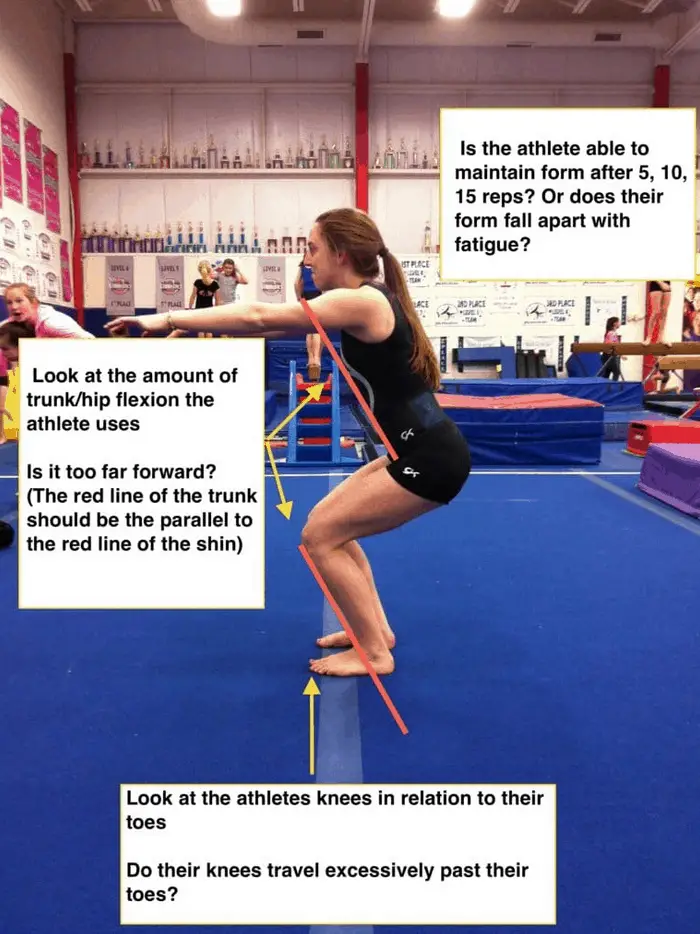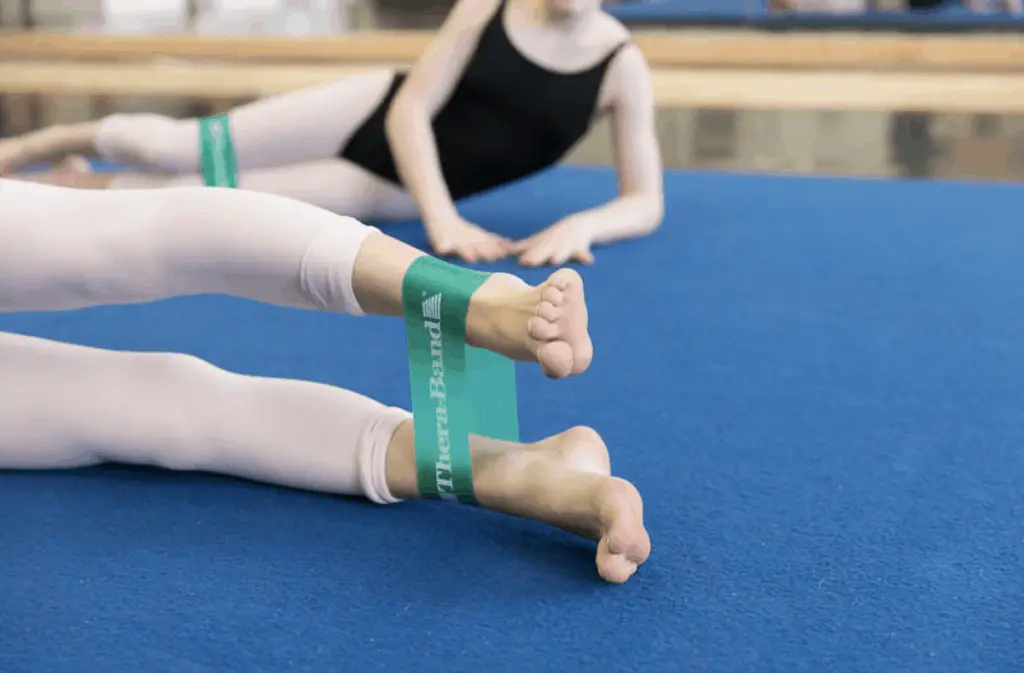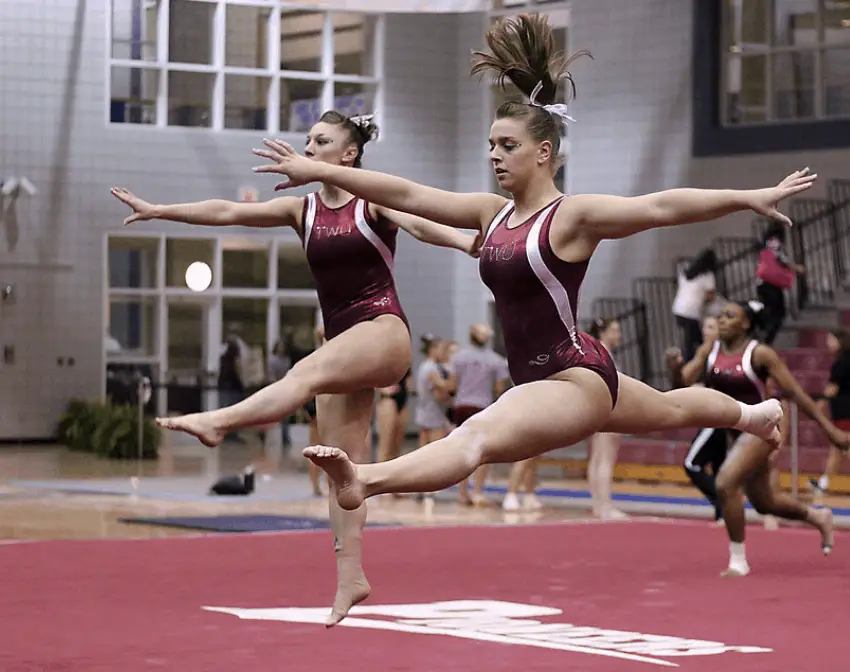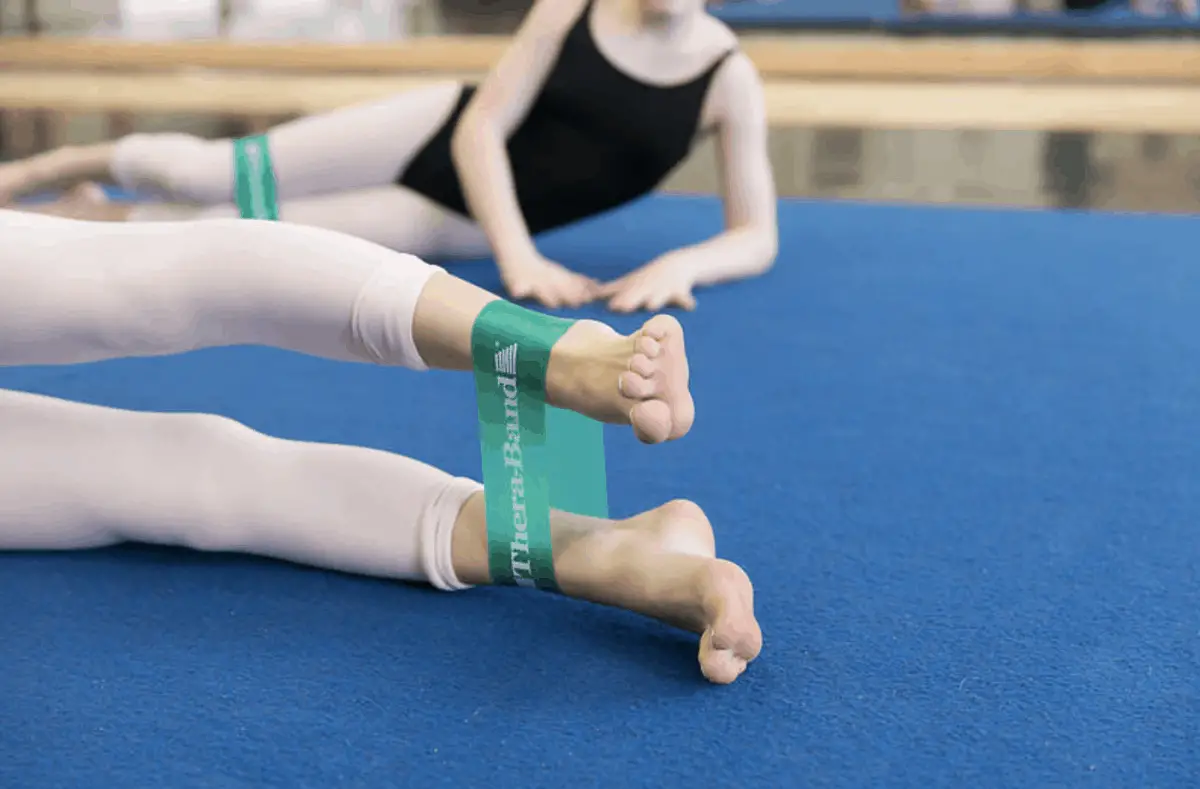If you have started learning gymnastics or know someone who is then you have likely at least heard of a split leap. This is actually one of the most important skills in gymnastics which all gymnastics have to master since it is one of the required skills in some of the routines for both the floor and the beam.
Here are the five exercises you can practice to master the split leap:
- Kicks
- Squats
- Therabands
- Splits
- Split Jumps
The Proper Form For A Split Leap
Now that you hopefully understand why knowing how to do a spilt leap is so important, you should also know what a split leap should look like. When you are first required to include a split leap in your routine in level 3 you do not have to do it perfectly.
Starting in level 3, you do have to do a 90° split. The degree of your split will gradually increase every level until you reach the point in level 6 where you should be able to do both split leaps and split jumps that reach a 180° split.
When judges are looking at a gymnast’s split leap, they will be looking at the legs which should be straight and at the same horizontal position. You should not have one leg going slightly higher than the other.
Other than that, you should leap a good distance off of the ground and have your feet pointed as well. The top part of your body should be vertical with your shoulders slightly back and your chin up. You should not have your head down looking at your front leg.
Since it can be hard to tell if you are doing some of these things right, it is vital that you not only practice but that you video yourself or have someone else tell you if you are off in some way. Once you know what you are doing wrong it can help you know what drill might be best to help you improve.
Split Leap Drill #1: Kicks
In order to do a proper split leap properly, you have to literally kick your legs up and into the proper position before you land. Since this is the case, practicing your kicks can help you with the muscles needed to kick up and into your split.
Since one leg is kicking forward in a split leap while the other leg is kicking back, it is important to practice both your front kicks and your back kicks. In order to really extend your leg as fast and hard as you can, it may be necessary to hold onto the back of a chair or something.
For this drill, start with leaning back against something with your shoulders or holding something behind you and then kick your leg as fast and as far forward as you can. Do the same with the other leg and go back and forth between the two until you have done both legs 20 times.
Then, turn yourself so that your side is facing whatever you are using for your support and with your outside leg kick out to the side as fast and as hard as you can. Do this 20 times and then turn to do the same for the other side as well.
Lastly, turn so that you facing your support and then kick back with your legs alternating your kicks until each leg has done 20 kicks back. In all of these kicks it is important that you keep your legs perfectly straight. You should also be pointing your toes with each kick and eventually you should be able to do these drills without having a support.
Split Leap Drill #2: Squats
Considering how important your legs are when you are doing a split leap, it should be no surprise that squats are a good drill to help you improve your split leaps. The way that this helps is that it strengthens the muscles that you need to push up and off the ground into your leap which is almost as important as the muscles needing to kick your legs up into their split position.

In order to do a proper squat, you should start standing with your feet the same distance apart as your shoulders. Your feet can be either pointing straight forward or to the sides slightly. In fact, where your feet are pointing will slightly affect the muscles you are trying to work on.
For this reason, you can do one set of squats with your toes pointed forward and then another set with them pointed out a little to get the most out of your squats. Finally, as you do your squats you should keep your back straight and squeeze your torso muscles.
As you lower yourself, put your weight on your heels, extending your arms if needed to keep your balance. When you are rising, push up through your heels until you are standing again. You can do these in sets of however many you feel like doing, though if you can do a lot of them you should instead add a weight such as a kettlebell held in your hands.
Split Leap Drill #3: TheraBands
Since the leg muscles are so important to do a split leap, therabands are a great way to add some resistance to your kicks and things in order to strengthen these muscles even more. To use a theraband as part of a drill to improve your split leap, make sure that you have enough space to fully extend your leg without kicking anything.
First, start with a set of 10 to 20 quick kicks as far forward as you can with the theraband giving resistance. Follow that by a set of the same amount of kicks to the side and then a set of kicks back. Once you have done that with one leg, do the same for the other leg.

If you suspect that you can go further back with one leg than the other but you are not certain, slowly stretch out your leg instead of doing a quick kick and compare the two legs. If one leg does go further back easier then work with this leg more.
This can be a vital part of making sure that your legs come up evenly for your split leap and can really help you improve all on its own. However, the fact that is strengthens your kicking is also a plus and it is the main reason why gymnasts use therabands.
Split Leap Drill #4: Splits
This is perhaps one of the most obvious drills that you can do to improve your split leaps since it is impossible to do a split in the air if you struggle to get into a split on the ground. Practice getting into a split position until you can do a split on the ground with either leg forward without a problem.
Next, prop a mat up against a wall and do drills where you kick one leg up and into a split position where one leg is on the ground and the other is pointing up and resting on the mat. Hold this for a moment to stretch a little and then repeat this with the other leg.
Split Leap Drill #5: Split Jumps
While both of these skills require you to do the splits, a leap requires more space to do than a jump does. This is because with a leap you are leaping forward as you push off from one foot whereas with a jump you are simply going straight up in the air as you jump off of two feet.

By practicing your split jumps in sets of 10 to 20 split jumps in a row, you are working on perfecting your leg positions. Jump off of both your feet with one leg forward and then the moment you land spring right back up but with the other leg forward.
Keep alternating back and forth as you do your sets to make sure that you can do your split the same either way. Most likely you will find that it is easier to do a split in the air with one specific leg forward and, while this is the way you will want to do it when you are competing, it is especially important to practice it the other way too in order to improve your split leap.

